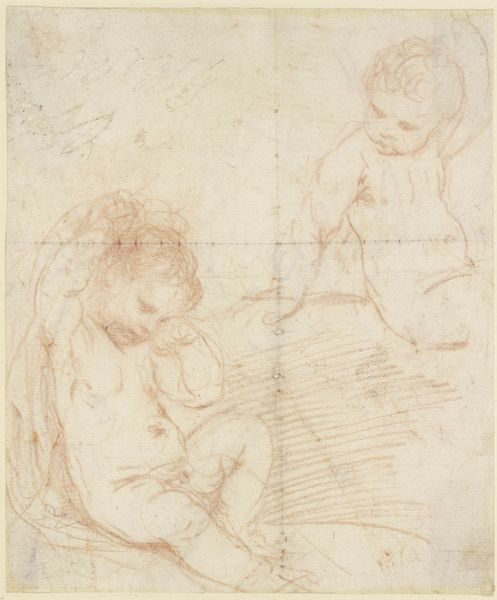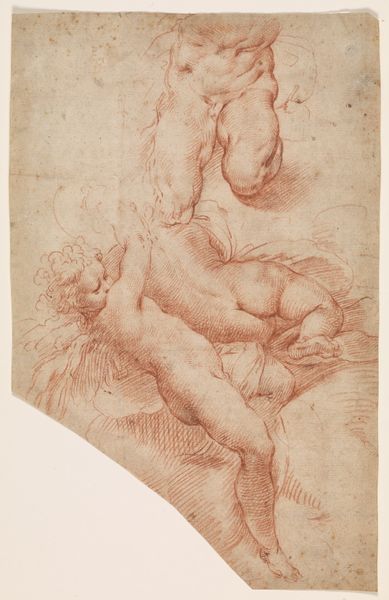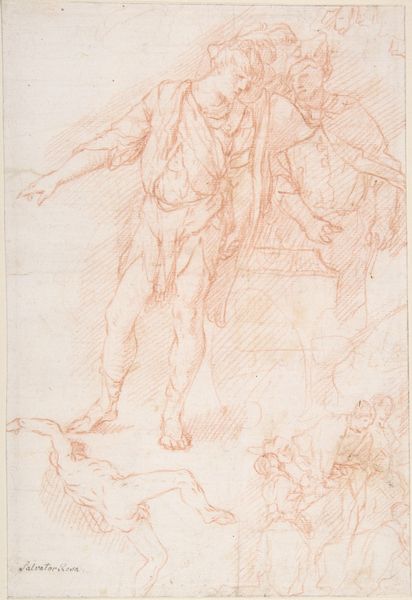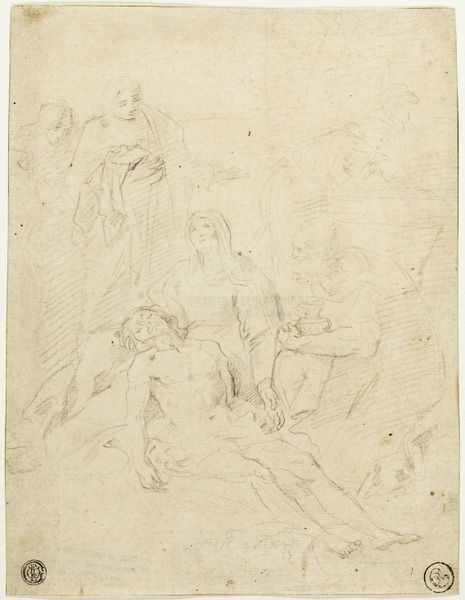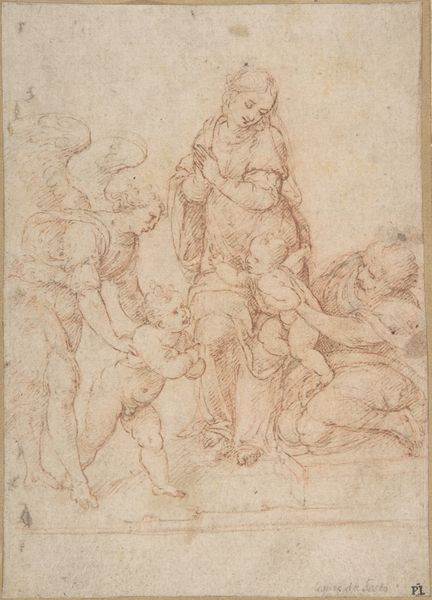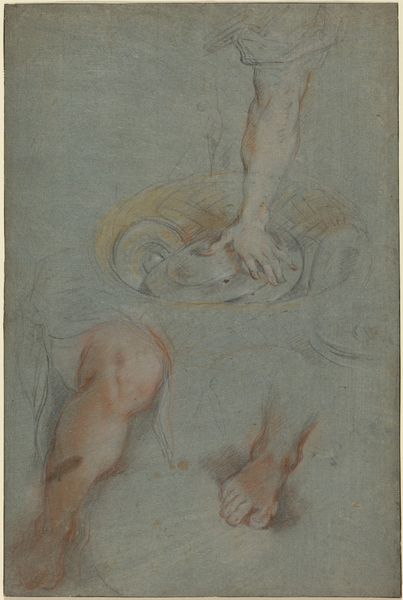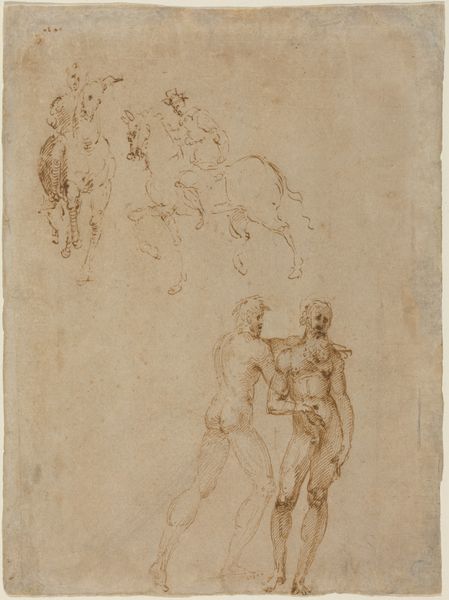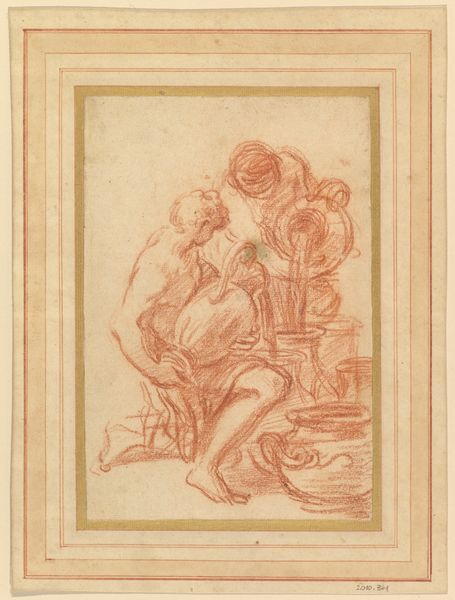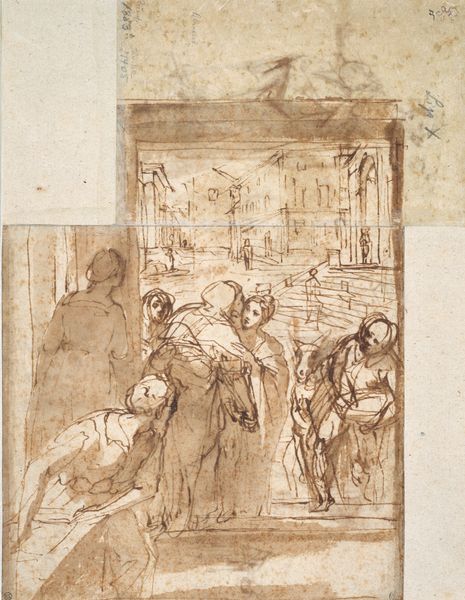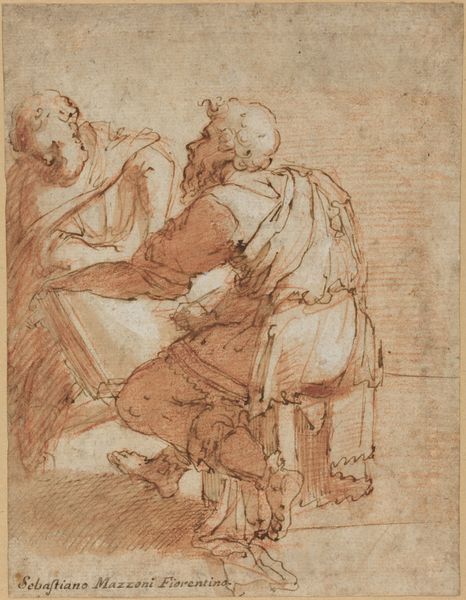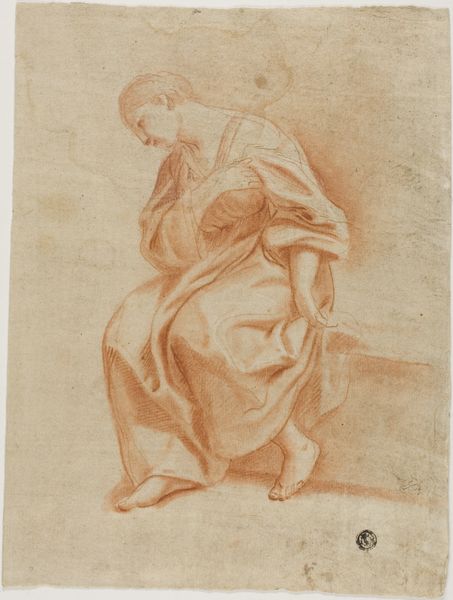
a) Studies of Figures and a Hand (recto); b) Studies of a Bull (verso) c. 1530
0:00
0:00
drawing
#
portrait
#
drawing
#
figuration
#
11_renaissance
#
italian-renaissance
Dimensions: sheet: 19 × 25 cm (7 1/2 × 9 13/16 in.) mount: 30.5 × 25.5 cm (12 × 10 1/16 in.)
Copyright: National Gallery of Art: CC0 1.0
Curator: This drawing by Giulio Campi, around 1530, entitled *Studies of Figures and a Hand*, is striking. Its sparse use of line and simple material, a reddish chalk, creates a sense of immediacy. What are your first thoughts about it? Editor: The quick, sketched lines definitely give it a feeling of being a preliminary study. I’m also intrigued by the range of figures – from what looks like a putto to a draped, standing figure, all rendered in this earthy, sanguine color. It's quite captivating, but I am unsure how to read its various components and their connection. What can you tell me about this work from your perspective? Curator: Well, thinking materially, drawings like these were essentially byproducts of workshop production, functional items. But they also provide glimpses into the Renaissance workshop. Note how the artist utilizes the red chalk. It’s economical but also expressive, allowing for shading and contouring with subtle variations in pressure. Consider how labor is embodied here. A drawing such as this allowed the Renaissance workshop master to transmit stylistic and technical knowledge. Editor: So, it's less about individual genius and more about the collaborative labor involved in artistic production at the time? Curator: Precisely. These studies demonstrate how a single sheet could become a repository of ideas, forms, and techniques, circulating within a workshop and contributing to a larger system of artistic production and dissemination. Consider, also, that these are materials intended not for display, necessarily, but as tools of learning and refining for use among artists. Editor: That’s a completely different perspective than what I would’ve initially assumed, thinking about this work in terms of composition or symbolism! I hadn’t really considered the social fabric woven into these studies. Curator: Right. By considering its production and usage, we understand how knowledge was transmitted, and labor divided within the artistic community. It is, in some respects, more revealing than the polished, final product. Editor: That’s fascinating. Looking at it this way really demystifies the art-making process, making it more grounded and understandable. Thank you.
Comments
No comments
Be the first to comment and join the conversation on the ultimate creative platform.

